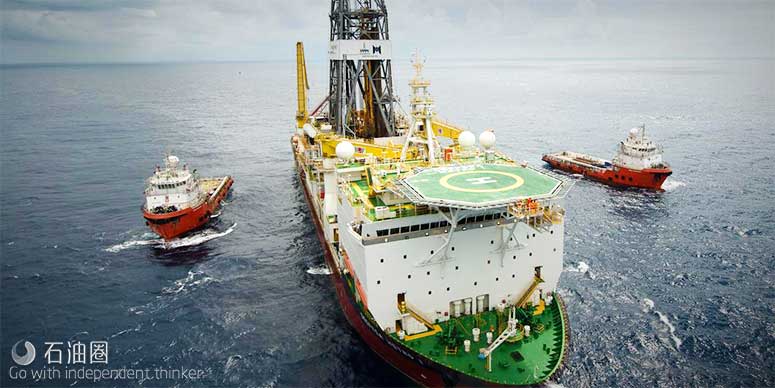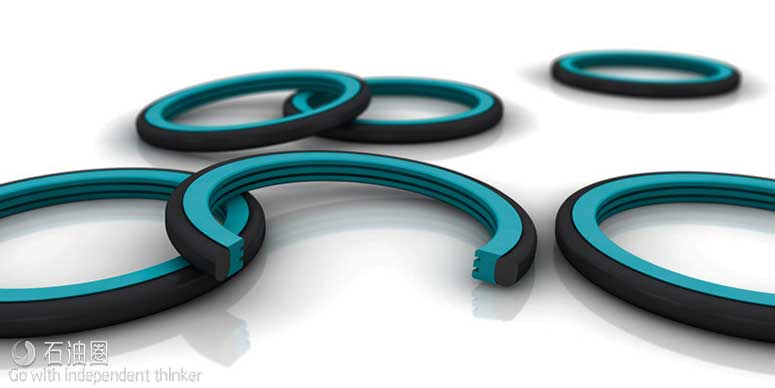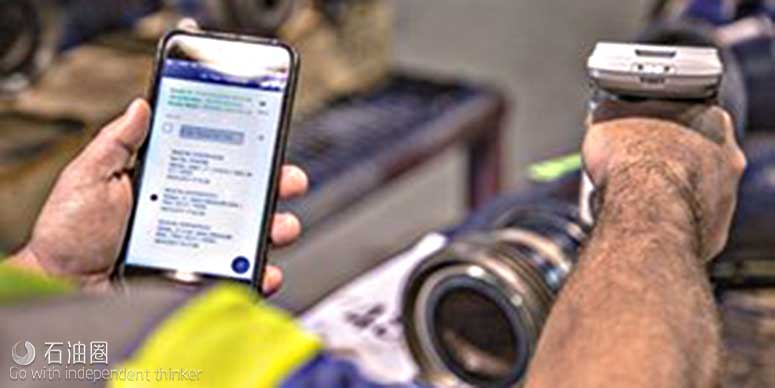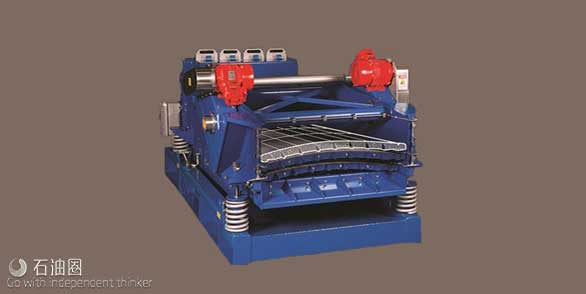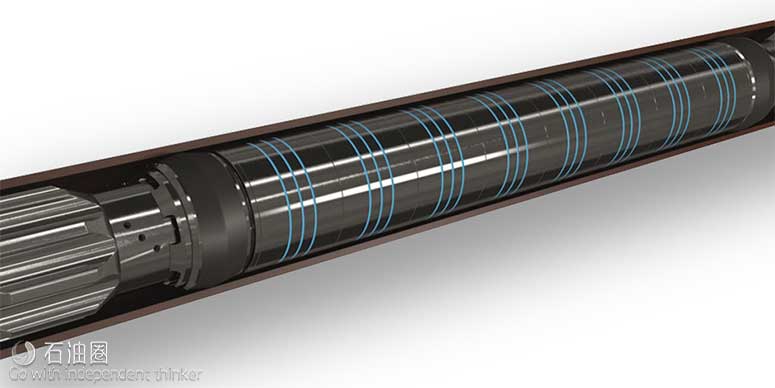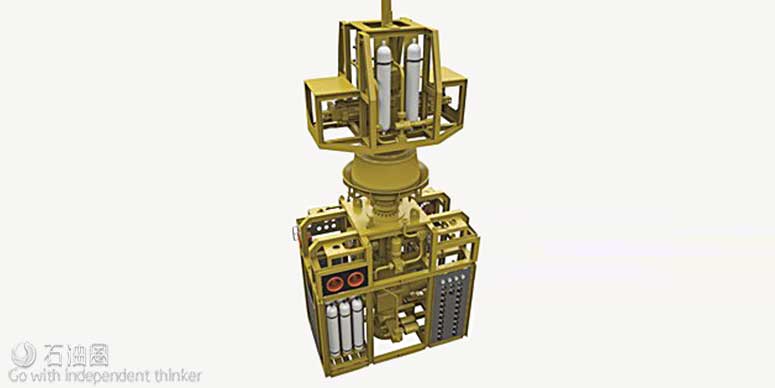As was the case last year, nearly all of this group of new technologies and next-generation improvements on existing products remains split between drilling and production applications. However, a couple of items address completions and well intervention. Among the miscellaneous items are an advanced battery system for offshore facilities; upgraded mooring release technology; and electrical heat-based technology that creates downhole sealants in minutes. As always, the companies developing and offering these advancements have geared their efforts to saving time and money.
TRELLEBORG’S ROTARY SEAL TARGETS HIGH PRESSURE
Trelleborg Sealing Solutions has launched a polytetrafluoroethylene (PTFE)-based, O-Ring-energized, single-acting rotary seal, Turcon Roto Glyd Ring DXL, Fig. 11. This seal is designed to meet the demands of high-pressure rotary applications within the oil and gas industry.
With its new design, the seal provides improved dynamic sealing efficiency and reduced friction by balancing the contact force on the dynamic lip under all service conditions, allowing for superior extrusion resistance and low torque. The seal is available in the company’s XploR range of NORSOK- and API-approved materials.
The seal can handle pressures up to 10,153 psi or speeds up to 16.4 ft/sec. The company recommends a maximum PV value up to 1.4 million (psi x ft/min) for optimal performance. These operating conditions are typically encountered in downhole tools, rotating control devices, hydraulic motors and pumps, and hydraulic swivels. Through extensive internal R&D and customer testing, the seal has exhibited extended life and outstanding wear resistance in abrasive media applications.
INTELLIGENT SENSOR IN A MUD-GAS SEPARATOR AND RFID FOR CERTIFICATES PROVIDE EFFICIENCIES TO OPERATORS
For OTC 2018, Weir Oil & Gas is focusing on new enhancements and technology that provide greater safety, cost savings, efficiency and up-time for operators. One such solution, Weir’s Mathena Mud Gas Separator Intelligent Level Sensor, accurately measures the levels within the mud-gas separator for MPD and under-balanced drilling operations, providing real-time data onsite. This gives operators much more time to avoid gas carryover to the active mud system and prevent an overflow scenario that would create a fluid spill from the igniter system. The sensor, which allows for the addition of a control valve, has been used in nitrogen-aerated drilling operations, in which overflow is a constant risk. Where operators previously had less than 20 min. of response time, they now have 3.5 hr to prevent overflow and eliminate liquid in the ecotank, reducing downtime and direct costs. This technology enhancement has generated hundreds of thousands of dollars in savings for installed sites.
Another solution vastly simplifies the time-consuming and error-prone process of maintaining an iron fleet. Traditionally, companies have relied on tedious manual data collection and physical storage of printed certificates—resulting in millions of dollars lost, due to the inability to produce required certificates for uninterrupted operation.
With its RFID AMP 2.0 technology (Fig. 12), Weir has transformed this process. Using optical character recognition technology, operators can accurately upload certificates, regardless of the issuing inspection organization, into a single cloud-based storage location, allowing for immediate retrieval to avoid unnecessary downtime. Tagging and accounting for 900 pieces of iron would typically take three employees three full workdays. With this technology, one employee accomplished that task in less than 60 min., with certificates. New enhancements include: the ability to scan certificates offline for uninterrupted workflow, regardless of internet or cellular-signal strength, enhanced asset details to enable operators to see the status of items they wish to edit on the mobile app, and the ability to write new tags for items, even when operators are away from their connected networks.
MODULAR SHAKER UPGRADES FLUIDS-HANDLING CAPACITY
National Oilwell Varco (NOV) has successfully launched the SABRE modular shaker system, part of the Brandt line of solids-control products, Fig. 13. The shaker system is based on a scalable platform that can be changed easily from one to two, and two to three decks. This simple upgrade can be made in the field, which eliminates the need to change out the complete shaker system, and allows it to be quickly adapted to customer-specific applications.
The system’s more robust design differentiates it from its predecessors. Mounting the drive assemblies directly over the sidewalls of the basket allows for better energy transfer to the screens, and adjustable counterweights can compensate for G-force fluctuations when the number of decks is changed. These design features make the system a more potent primary screening system than similar models.
Ease of use and durability were principal factors when designing this shaker. The basket can be retrofitted onto most existing shaker skids, minimizing installation costs and downtime, and the super-lightweight screens, which weigh only 14 lb, can be changed out or repaired in a matter of minutes by a single operator, allowing immediate reuse. For operators whose drilling application requires the retention and recovery of costly lost-circulation or wellbore-stabilization materials, the shaker system’s triple-deck configuration can be set up to retain these particles and reintroduce them into the fluid system while still removing unwanted low-gravity solids (LGS).
Field tests have shown already that this shaker has 1.5 to 2 times the fluids-handling capacity of existing high-performance shakers. This performance advantage enables it to better control LGS throughout the entire drilling process, thereby reducing dilution and associated logistics costs. The shaker also has proven to deliver dryer cuttings compared to other high-performance units; in the latest field runs, the system consistently reduced oil retention on cuttings from around 11% to below 9%, decreasing both haul-off and disposal costs.
ELECTRICAL HEAT-BASED TECHNOLOGY CREATES DOWNHOLE SEALANTS IN MINUTES
BiSN has released Wel-Lok M2M (Fig. 14), an electrical heat-based technology that utilizes a modified thermite heater, in conjunction with bismuth-based alloys, to create downhole sealants that are superior to traditional elastomer seals, resins and cement. The tools are run in-hole on electric line, requiring only 240 volts and 60 milliamps for 15 seconds.
Bismuth has a viscosity similar to water when in the liquid state, allowing it to flow into the smallest of areas, including cement micro-annuli, without the need to pump it into place. Additionally, bismuth is non-corrosive, environmentally-friendly and is not affected by H2S, CO2 or acid washes. It is non-explosive, so no license or handling permit is required.
Once on-depth, the modified thermite chemical reaction heater is activated to heat the alloy until it melts. The liquid alloy flows into the area that it is intended to seal, and solidifies and expands to create a seamless gas-tight seal. The seal is created in just minutes and is ready to test within one hour.
The technology dramatically reduces the heating time needed to create an effective seal—from hours to minutes. This significantly reduces downtime and cost. It also can be deployed on any standard wireline, with no special connection or power requirements.
After completing 16 successful commercial tool runs, to date, BiSN now operates in 12 geo-markets, partnering with some of the oil and gas industry’s major operators, to deliver solutions to the industry’s most important sealing challenges.
The core Wel-Lok M2M technology has been developed into a suite of 10 tools, all of which produce significant time, cost and environmental benefits. These can be applied across a spectrum of projects, from completions to interventions and abandonment.
ADAPTIVE RISERLESS/RISERED WELL INTERVENTION OFFERED
Wild Well Control brings new and alternative well intervention methods with its improved, second-generation 7Series system, Fig. 15. The firm’s approach to P&A involves leaving the casing in place, and placing competent, tested cement plugs in the outer annuli of a well. The redesigned 7Series allows operators to switch between riserless and riser-based deployment functions without resurfacing. The efficiencies and expansion of capabilities for this second-generation method will provide significant time-savings and cost benefits, beyond the norm. All subsea wells are potential candidates for this technology.
The system is more compact, and allows for installation on a traditional semisubmersible or drillship, as well as vessels. “With the opportunity to use an MPSV, MODU, or combination of both, the 7Series facilitates a significant enabling environment, whereby the operators can now look seriously at reducing their P&A liabilities, in the realm of approximately 50%,” said Andrew Barry, director of Subsea Solutions at Wild Well. The dimension changes in the system will allow for easier transportation, offshore mobilization, and installation.
The system involves multiple technologies and techniques, including DeepRange, a riserless P&A tool. Run in conjunction, this allows perforating and circulating plugging material through an outer annulus, rather than perforating and squeezing or cutting and pulling casing.
The significant enhancement to the system is its capability to switch, on the fly, between riserless and riser-based deployment functions without resurfacing. The well operations will determine the choice between using riserless or riser-based options. Some operations cannot be completed using a wireline, such as milling out a plug or cleaning out a wellbore with sand. If the planned operations change from light well intervention (slick or wireline) to medium well intervention (coiled tubing), the system can adapt, as needed.

 石油圈
石油圈